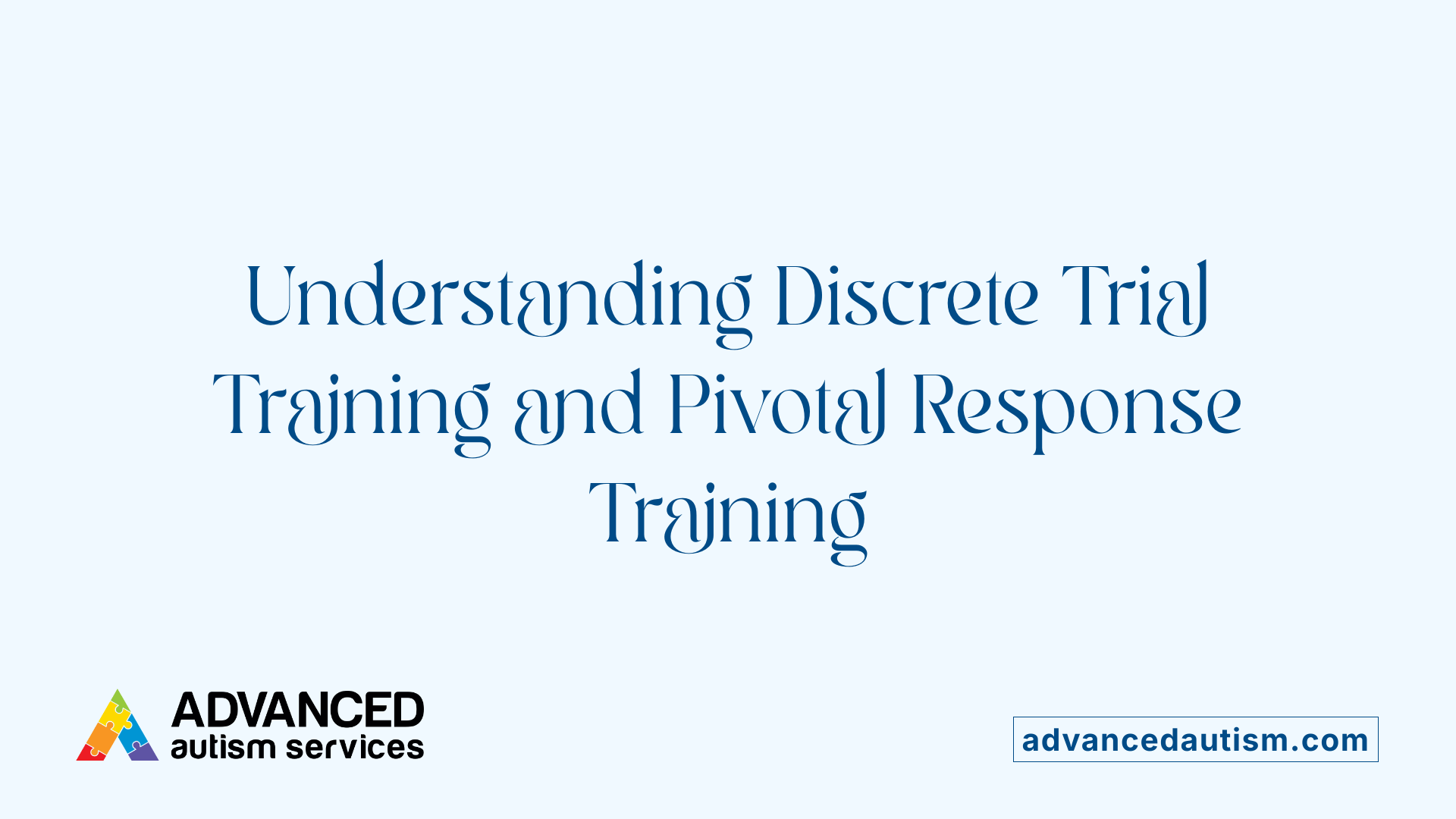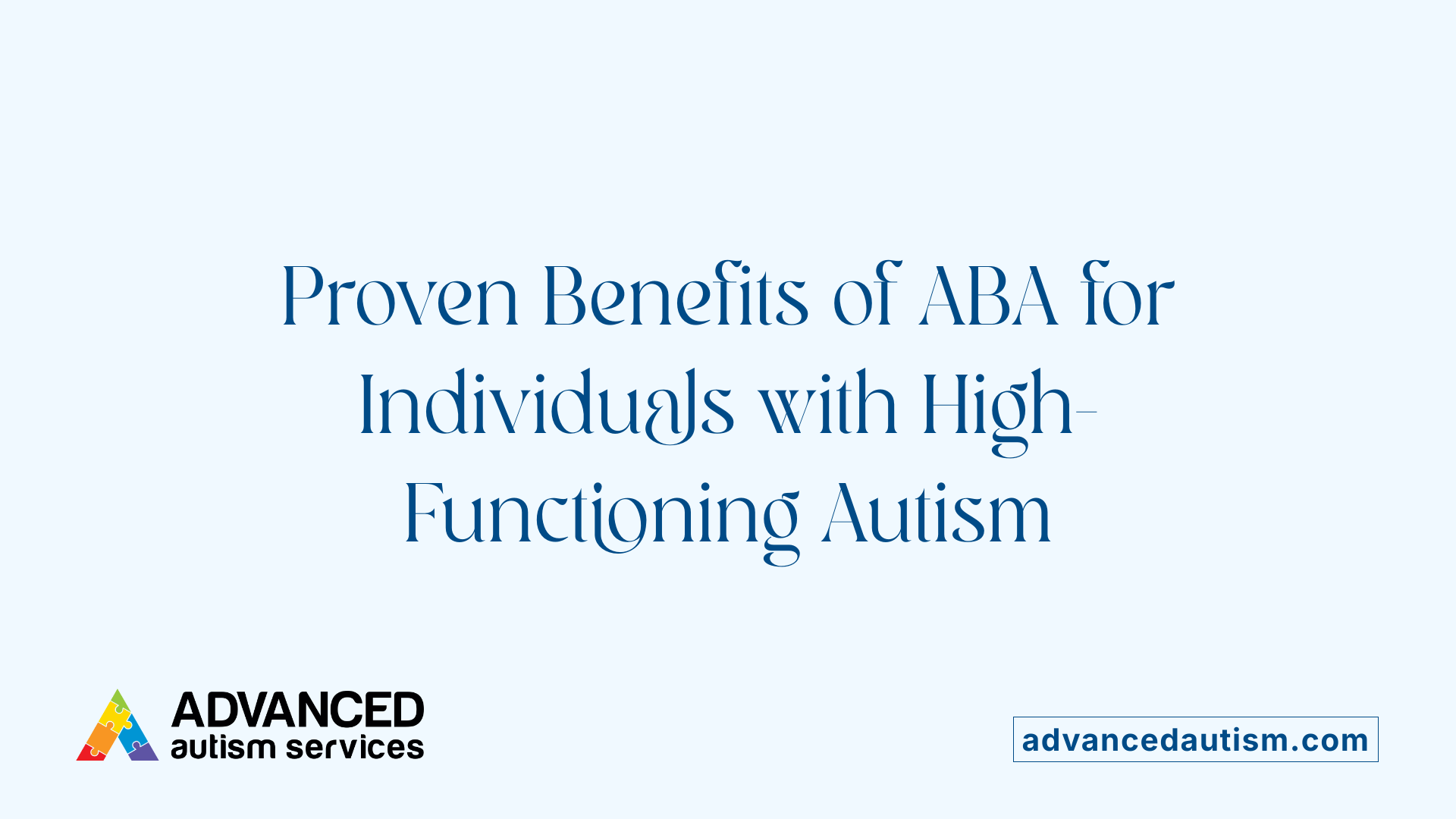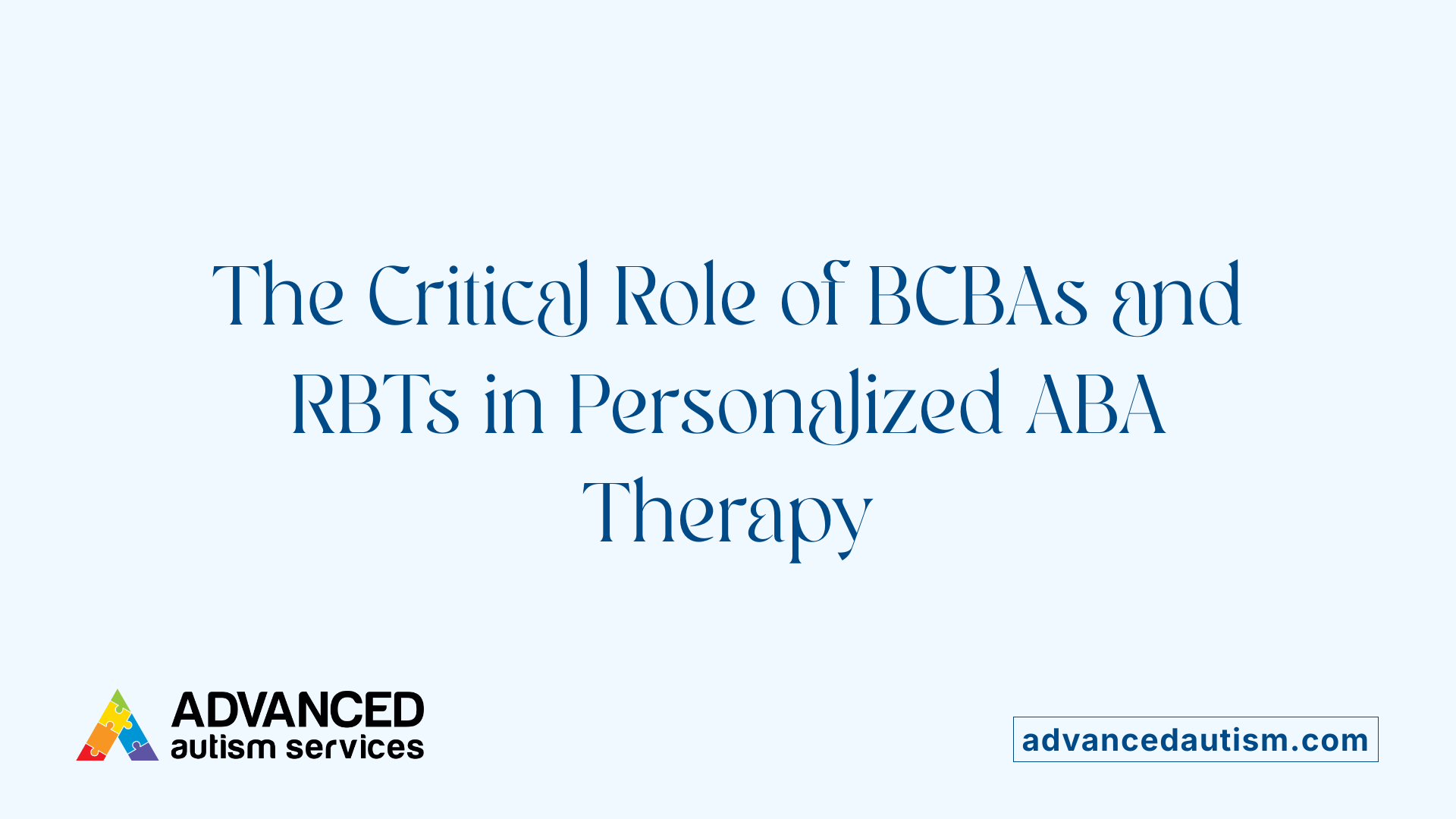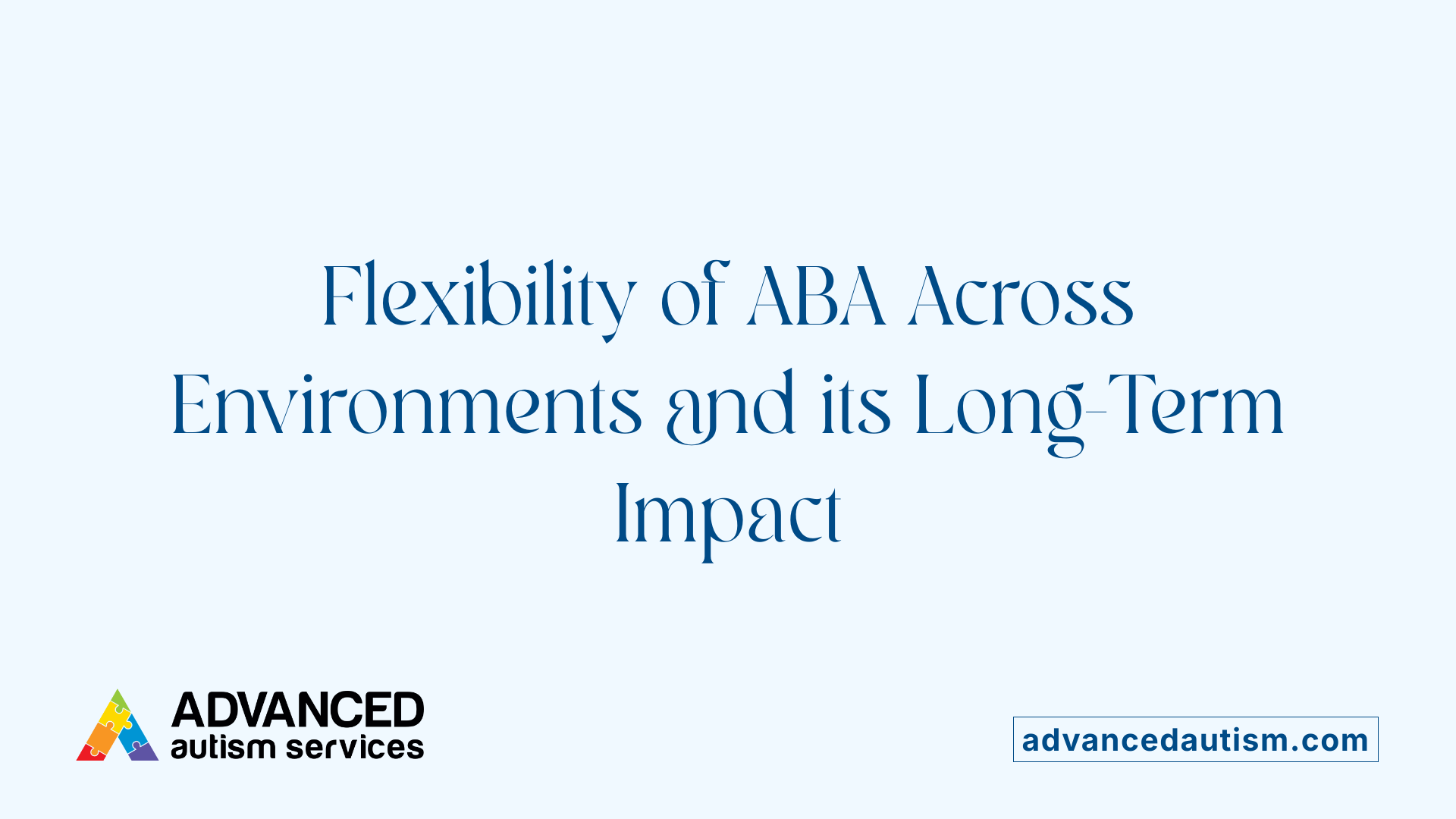ABA Therapy for High-Functioning Autism
Unlocking Potential: The Role of ABA in Supporting High-Functioning Autism
Understanding ABA Therapy and Its Significance
Applied Behavior Analysis (ABA) is a scientifically grounded approach widely recognized for its effectiveness in supporting individuals with autism spectrum disorder (ASD), particularly those with high-functioning autism. This article explores the various facets of ABA therapy, from techniques and benefits to its suitability across different ages and severity levels, providing a comprehensive overview of how this therapy can promote independence, communication, and social skills.
Core Principles and Techniques of ABA Therapy

What are the common ABA therapy techniques and methods?
Applied Behavior Analysis (ABA) is grounded in behaviorist theories that emphasize learning through reinforcement and systematic data collection. Its techniques are designed to strengthen positive skills and reduce undesirable behaviors.
Two widely used approaches are Discrete Trial Training (DTT) and Pivotal Response Training (PRT). DTT involves breaking down skills into small, manageable steps and teaching them systematically with clear instructions followed by immediate reinforcement. This method works well for teaching specific behaviors, such as communication or self-care tasks.
PRT differs by focusing on pivotal areas such as motivation, response to multiple cues, and self-management. It encourages natural learning through play and everyday interactions, making it especially effective for improving spontaneous communication and social behaviors.
In addition to these, several strategies make up the core of ABA techniques:
- Positive Reinforcement: Rewarded behaviors are more likely to be repeated. Rewards can be praises, tokens, or preferred activities.
- Prompting and Fading: Temporary cues are used to help children perform desired behaviors, gradually removed as independence increases.
- Behavioral Modeling: Demonstrating desired behaviors for the child to imitate.
- ABC Analysis (Antecedent-Behavior-Consequence): A method used to understand what triggers specific behaviors and what consequences reinforce them.
Using these techniques, behavior analysts develop personalized programs that track progress meticulously. Data collection helps determine what strategies work best for each individual, ensuring continual improvements.
| Technique Name | Approach Description | Typical Use Case |
|---|---|---|
| Discrete Trial Training (DTT) | Structured step-by-step instruction with reinforcement | Teaching basic skills like matching or imitation |
| Pivotal Response Training (PRT) | Naturalistic, play-based targeted at key behaviors | Improving motivation, social initiation |
| Prompting and Fading | Providing hints or cues to encourage completion, then gradually removing them | Increasing independence in daily tasks |
| ABC Analysis | Observing antecedents, behaviors, and consequences | Modifying problem behaviors |
By adapting these methods to each child's needs and goals, ABA therapy effectively promotes skill development and behavior management, supporting long-term success.
Benefits and Evidence Supporting ABA for High-Functioning Autism

What are the benefits and effectiveness of ABA therapy for individuals with high-functioning autism?
Applied Behavior Analysis (ABA) has been extensively studied and shown to offer meaningful advantages for children and adolescents with high-functioning autism. This therapy focuses on enhancing vital skills such as language, communication, social interaction, and daily adaptive behaviors.
ABA uses a science-based approach rooted in the principles of learning and behavior. Central to it is positive reinforcement, where desirable behaviors are encouraged through rewards like praise, tokens, or preferred activities. This strategy helps children develop useful skills and reduces behaviors that may interfere with learning or social engagement.
An important aspect of ABA is its adaptability to individual needs. Each program is carefully crafted to target specific goals, whether improving speech, fostering social initiation, or increasing independence in daily routines. For high-functioning individuals, the therapy can be less structured and more naturalistic, emphasizing participation, choice, and joy.
Research consistently supports the effectiveness of ABA, particularly when intervention begins early and is intensive over several years. Studies demonstrate that early, sustained ABA can significantly boost cognitive abilities, attention span, and social skills. These improvements often translate into better academic performance, more meaningful peer relationships, and greater independence in everyday life.
ABA’s ability to generalize skills across settings—home, school, and community—makes it especially valuable for older children and teens. For example, teaching a mildly affected teen how to initiate conversations, respond appropriately, or greet peers in social contexts can dramatically improve their social competence.
In summary, ABA for high-functioning autism provides concrete, measurable benefits. It promotes long-term development by building essential skills, reducing problematic behaviors, and fostering greater participation in daily life activities.
Assessment, Customization, and Role of Professionals in ABA

How important are tailored assessments like Functional Behavior Assessment (FBA)?
Assessments such as the Functional Behavior Assessment (FBA) are crucial in ABA therapy. They involve analyzing the antecedents (events leading up to a behavior), the behavior itself, and the consequences that follow. This thorough understanding helps identify the specific functions behind behaviors, whether they are to gain attention, avoid certain tasks, or seek sensory input.
The insights gained from an FBA guide the development of personalized behavior intervention plans. These plans are designed to target the unique needs of each individual, ensuring that interventions are relevant and effective. Without proper assessment, ABA programs might not address underlying causes or might only focus on surface behaviors.
What is the role of professionals like BCBAs and RBTs?
Qualified professionals play an essential role in successful ABA implementation. A Board Certified Behavior Analyst (BCBA) designs and oversees the entire therapy plan. They conduct assessments, set realistic goals, develop intervention strategies, and monitor progress. Their expertise ensures that the therapy is evidence-based, ethical, and tailored to the individual.
Registered Behavior Technicians (RBTs) are trained to implement the treatment plans under the supervision of a BCBA. They work directly with clients during therapy sessions, providing one-to-one instruction, reinforcement, and support. Their role is vital for consistency and ensuring that therapy sessions are engaging and effective.
How are programs personalized based on individual needs?
Every person with autism is unique, and so their ABA programs are customized accordingly. The process begins with a comprehensive assessment, including possibly an FBA, to understand each individual’s strengths, challenges, and interests.
Goals are then set in various areas such as communication, social skills, self-care, play, motor skills, and academics. The intervention strategies are adapted to match the person’s developmental level, learning style, and preferences. For example, a child with high-functioning autism might have a less structured program focusing more on social opportunities and independence.
By tailoring programs, ABA therapy becomes more engaging, relevant, and effective, fostering meaningful progress and lasting skills. This customization ensures that each individual benefits fully from the therapy, promoting growth and self-sufficiency.
Adaptability, Settings, and Long-Term Benefits of ABA

How flexible is ABA therapy across different environments and age groups?
Applied Behavior Analysis (ABA) is highly adaptable, making it suitable for a wide range of settings and age groups. Originally developed for young children, ABA techniques are now tailored for teens, adults, and individuals with varying levels of autism severity, including high-functioning autism.
ABA can be implemented in clinical settings, homes, schools, and community environments. Its flexibility allows practitioners to modify activities to match individual interests and developmental stages. For example, discrete trial training (DTT) may be used in structured therapy sessions, while pivotal response training (PRT) fosters naturalistic learning in everyday situations. This adaptability ensures that skills learned in therapy can be transferred seamlessly into real-life contexts.
How does ABA involve families and integrate into daily routines?
Family involvement is a cornerstone of successful ABA programs. Caregivers are often trained to reinforce learned behaviors during daily activities, promoting consistency and generalization. This may include teaching parents and teachers how to implement reinforcement strategies or prompting techniques.
Integrating ABA into daily routines makes therapy more natural and less disruptive. For instance, practicing social greetings during meal times or encouraging communication during playtime can help children apply new skills in familiar settings. This approach enhances engagement and motivation, making learning continuous beyond formal therapy sessions.
What are the long-term benefits of ABA in skill development and independence?
One of ABA's major strengths is its focus on fostering lifelong skills. With early and intensive intervention, individuals often develop improved communication, social interaction, and self-care abilities. These skills translate into greater independence in daily life, such as managing self-help tasks or engaging confidently in social situations.
Over time, children and adults learn to self-regulate behaviors and navigate complex emotional responses. The individualized nature of ABA allows for setting personalized goals, ensuring that each person gains skills relevant to their future success. Many benefits persist well beyond the therapy, contributing to improved quality of life, participation, and overall well-being.
| Aspect | Details | Additional Notes |
|---|---|---|
| Settings | Clinical, home, school, community | Flexible with environment; encourages skill generalization |
| Age Range | Young children to adults | Tailored approaches for developmental stage |
| Family Role | Active caregiver training | Promotes consistent reinforcement |
| Long-term Goals | Increased independence, social skills, communication | Focus on meaningful, lifelong skills |
Addressing Criticisms and Ethical Considerations in ABA
What are the common ABA therapy techniques and methods?
Applied Behavior Analysis (ABA) utilizes a range of evidence-based strategies aimed at improving functioning and reducing undesirable behaviors. One of the fundamental approaches in ABA is Discrete Trial Training (DTT), which involves step-by-step instructions paired with rewards to encourage specific responses. This method provides a structured learning environment conducive to skill development.
Another popular approach is Natural Environment Teaching (NET), which integrates learning into everyday settings, making skill acquisition more relatable to real-life situations. Behavior chaining gradually teaches complex tasks by breaking them down into smaller, manageable steps.
Prompting and Fading are techniques where prompts (visual, verbal, or physical cues) are initially provided to guide the behavior, then gradually removed to foster independence.
Reinforcement strategies are central to ABA. These include positive reinforcement, where a preferred reward encourages repeated behavior, and negative reinforcement, where removal of an unpleasant condition encourages desired responses.
Visual tools like video modeling, picture exchange communication systems (PECS), and verbal prompts support learning by providing clear, repeatable cues.
Behavior analysts frequently apply the ABC model—understanding the Antecedent (what happens before the behavior), the behavior itself, and the Consequence (what happens after)—to analyze and modify responses effectively.
Other strategies include behavior contracts, extinction procedures (removing reinforcement for harmful behaviors), and script fading to encourage spontaneous communication.
All techniques are carefully tailored to each individual, with ongoing data collection to track progress and refine interventions, ensuring that therapy remains personalized and effective.
Empowering Independence and Growth Through ABA
In conclusion, ABA therapy stands as a highly effective, adaptable, and evidence-based intervention for supporting individuals with high-functioning autism. By utilizing proven techniques, personalized assessments, and naturalistic strategies, ABA fosters the development of critical skills while respecting each individual’s unique profile. Its capacity to promote independence, enhance communication, and reduce challenging behaviors makes it a vital component of comprehensive autism support. As the field continues to evolve towards more naturalistic and person-centered approaches, ABA remains a cornerstone in empowering individuals with autism to reach their full potential.
References
- Applied Behavior Analysis (ABA)
- The Controversy Around ABA
- Treatment and Intervention for Autism Spectrum Disorder
- Enhancing Potential: The Advantages of ABA Therapy for ...
- Is ABA Therapy Good for High Functioning Autism - ACES
- Is ABA Good for High-Functioning Autism?
- Can ABA help a teen on the mildly affected end of ...
- ABA Techniques: Strategies for Behavior Analysts - GSEP Blog







